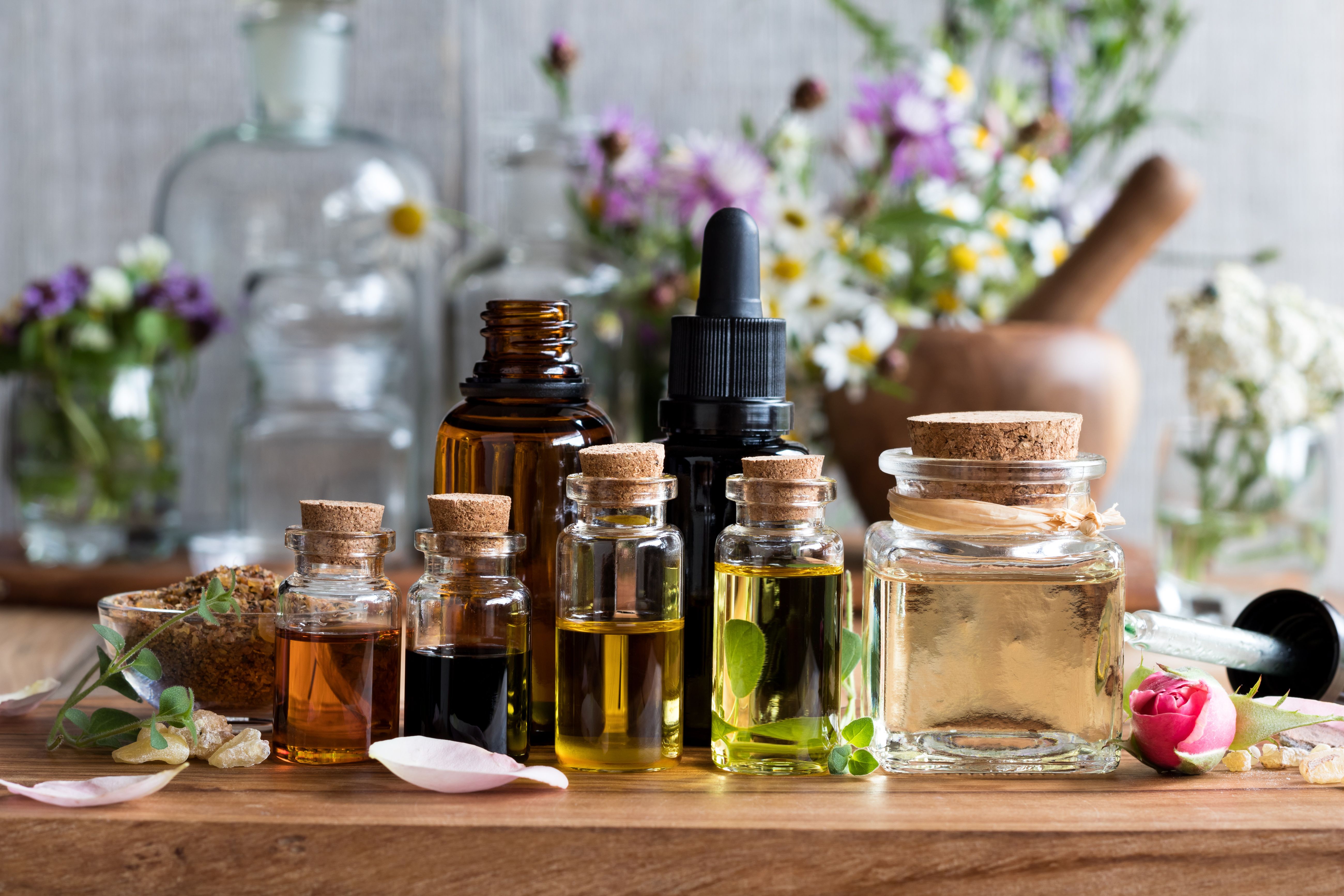Using LC–MS to Detect Phototoxins in Essential Oils
Scientists from dōTERRA International and dōTERRA Global in Utah and Ireland recently created an analytical method of detecting phototoxins in essential oils based around liquid chromatography–mass spectrometry (LC–MS). Their research was published in Chromatographia (1).
Selection of essential oils with herbs and flowers | Image Credit: © Madeleine Steinbach - stock.adobe.com

Essential oils have been a controversial topic in healthcare for some time. One topic of debate with these substances are the occurrence of coumarin-based photoactive compounds. Coumarin is a substance that has been banned in the United States since 1954 because high concentrations of it can cause liver damage (2). Although it can still be legally present in substances like tobacco, soaps, and cosmetic products, their presence in essential oils is questionable. To guarantee these products are safe for human consumption, an analytical method for major coumarin-based phototoxins is needed to ensure essential oils are safe and compliant with regulatory requirements.
In response to this demand, the scientists in this study developed a LC–MS analytical method to identify and quantify 25 coumarin derivatives in essential oils. This procedure was optimized using selective solvent extraction to remove limonene matrix interference. An ultrahigh-pressue LC (UHPLC) column containing a biphenyl stationary phase was used to achieve optimal sensitivity and specificity. Moreover, an interlaboratory group conducted a validation study to evaluate the method’s performance.
The target analytes had their limit of quantification (LOQ) valid at 5 µg/g, with satisfactory recoveries being obtained for most analytes, specifically within the range of 80–115%. Additionally, the repeatability real standard deviation (RSD) (within-laboratory) and reproducibility RSDR (between-laboratory) were <10%. Overall, the scientists’ method proved applicable for quality control testing and detecting coumarin-based phototoxins in essential oils.
References
(1) Li, S.; Kelly, C.; Knob, R.; McConnell, K.; Barrett, J. Analysis of Coumarin-Based Phototoxins in Citrus-Derived Essential Oils Using Liquid Chromatography-Mass Spectrometry. Chromatographia 2024, 87, 59–69. DOI: https://doi.org/10.1007/s10337-023-04298-5
(2) Is coumarin legal? AAT Bioquest 2022. https://www.aatbio.com/resources/faq-frequently-asked-questions/is-coumarin-legal (accessed 2023-1-22)
New Method Explored for the Detection of CECs in Crops Irrigated with Contaminated Water
April 30th 2025This new study presents a validated QuEChERS–LC-MS/MS method for detecting eight persistent, mobile, and toxic substances in escarole, tomatoes, and tomato leaves irrigated with contaminated water.
Accelerating Monoclonal Antibody Quality Control: The Role of LC–MS in Upstream Bioprocessing
This study highlights the promising potential of LC–MS as a powerful tool for mAb quality control within the context of upstream processing.
University of Tasmania Researchers Explore Haloacetic Acid Determiniation in Water with capLC–MS
April 29th 2025Haloacetic acid detection has become important when analyzing drinking and swimming pool water. University of Tasmania researchers have begun applying capillary liquid chromatography as a means of detecting these substances.
Prioritizing Non-Target Screening in LC–HRMS Environmental Sample Analysis
April 28th 2025When analyzing samples using liquid chromatography–high-resolution mass spectrometry, there are various ways the processes can be improved. Researchers created new methods for prioritizing these strategies.

.png&w=3840&q=75)

.png&w=3840&q=75)



.png&w=3840&q=75)



.png&w=3840&q=75)



